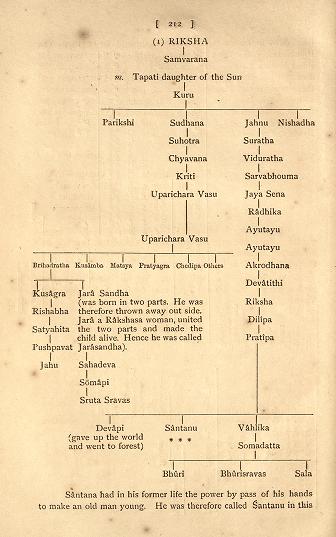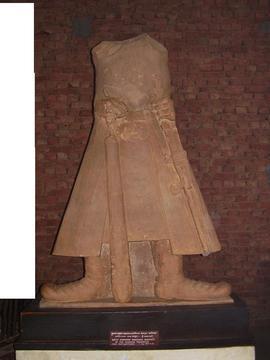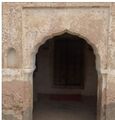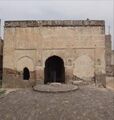Kaswan
| Author:Laxman Burdak, IFS (R) |
Kaswan
(Kashvan, Kaswa, Kasba, Kasvan, Kuswan, Kasuan, Kusuma, Kushman, Kashwan)
Location : Rajasthan, Punjab, Madhya Pradesh, Uttar Pradesh, Maharashtra and Haryana
Country : India
Kaswan (कसवां)/ Karswan (कर्सवान) [1] Kashvan (कशवां)[2] Kaswa (कस्वा) Kasba (कस्बा) Kasvan(कसवां) Kuswan (कुसवां) Kasuan (कसुवां) Kusuma (कुसुमा) Kusma (कुसमा) Kushman (कुशमान)[3] [4] Kusumba (कुसुम्बा) Kusumva (कुसुम्वा) Kuswan (कुसवान)/Kushwan (कुशवान) [5] [6] Kashwan (कश्वां) Kaswan (कसवान)[7][8] Kusaman (कुसमां) [9] is a Gotra of Jats in Rajasthan,[10] Punjab, Madhya Pradesh, Uttar Pradesh, Maharashtra and Haryana in India. The word Kaswan is 'XWN' of Tocharian language meaning King. Dilip Singh Ahlawat has mentioned it as one of the ruling Jat clans in Central Asia. [11]
Origin of Kaswan
- Some Jat historians consider Kusha (कुश) , the son of Rama, as the ancestor of Kaswan clan of Jats. [12]
- Rigveda mentions a river named Kusava (कुसावा) (RV IV.18.8.) which has been identified with the Kunar River in Pakistan. The Kunar River, the Kurram River, and the Gomal rivers to the west, and the Kunihar River to the east of the Indus, all of which are derived from the Scythian ku, " water."[13] Kusava may be place of origin of Kaswan clan.
- Mahabharata [14] mentions about a King of the Paurava race named Uparichara (Vasu) of Chedi Kingdom. Vasu had five sons:Vrihadratha (King of Magadha), Pratyagraha, Kusamva (also called Manivahana), Mavella and Yadu. [15] Kusamva (कुसम्व) is probably ancestor of the Kaswan clan. This fact is further attested from the Hathigumpha inscriptions of King Kharavela in Orissa.
Jat Gotras Namesake
- Kusma (Jat clan) = Kusmurra = Kosmarra = Kusumabhoga (कुसुमभोग). Kosmarra is a village in Kurud tahsil in Dhamtari district, Chhattisgarh. Kusumabhoga (कुसुमभोग) is mentioned in verse-17 of Rajim Stone Inscription of Prithvideva II - Kalachuri Year 896 (=1145 AD).... (V. 17) Who (Jagapala) conquered with ease Kantara (कान्तार) (the forest-country), Kusumabhoga (कुसुमभोग), Kândâ-dôngara (कांदाडोंगर) and the country of Kakayara (काकयर). (p.457)....Kusumabhoga (कुसुमभोग) is perhaps identical with Kusmurra in the Dhamtari tahsil, 18 m south by west of Rajim. (p.453).[16]
In Mahabharata
- Kushavan (कुशवान) (Lake) in Mahabharata (III.130.15),
- Kusamva (कुशाम्ब) in Mahabharata (I.63.29)
Vana Parva, Mahabharata/Book III Chapter 130 mentions Kushavan (कुशवान) in Mahabharata (III.130.15). [17]....Yonder is the lake Kushava, where grown the lotuses called Kusheshaya, and here also is the sacred hermitage of Rukmini, where she attained peace, after conquering that evil passion, anger.

Adi Parva, Mahabharata/Mahabharata Book I Chapter 63 mentions about a King of the Paurava race named Uparichara (Vasu) of Chedi Kingdom. Vasu had five sons:Vrihadratha (King of Magadha), Pratyagraha, Kusamva (also called Manivahana), Mavella and Yadu. [18] Here Kusamva is nothing but the Kaswan tribe. This fact is conformed from the Hathigumpha inscriptions of King Kharavela in Orissa.
Mahabharata Vana Parva mentions a country called Kushavan, in the north of Manasarovara Himalayas. [19]
Shalya Parva, Mahabharata/Book IX Chapter 44 shloka 35 mentions about Kaswan tribe among the high-souled five companions, given by Dhatri, who came to the ceremony for investing Kartikeya with the status of generalissimo. [20]
Mention by Panini
Kasha (काश) is name of a place mentioned by Panini in Ashtadhyayi (4.2.80.5). H. W. Bellew[21] mentions the Kasha river of Tirah, where it is joined by the Hangu stream, in Miranzai of Kohat Pakistan.
History
Ram Swarup Joon[22] writes about Hanga Chaudhary: Hangamas was a General of the Kushan, Yuechi or Tushar kings. Hanga is very well known in history. He belonged to Tushar or Kasvan dynasty and was appointed as the Governor of Mathura. His descendants came to be called Hanga. They have about 80 villages in district of Mathura.
Ram Swarup Joon[23] writes....Kasva appears to be a distorted form of Kushana. They have 350 villages in a compact group in Bikaner. Previously Sidmukh was their capital which was occupied by the Bika and the Godara Jats. Ratangarh and Churu were their territories. They had 2000 camel riders in their army.
Ram Swarup Joon[24] writes about Shahikasva or Shawal: This is an old gotra. They call themselves the descendants of Kasva. Their kings Anta Raj Devputra acquired the royal title. His coins were found in the Punjab and Kabul. On these, coins is inscribed the name of Kasva King Tames, who ascended the throne in 935 AD. Coins of Bhimsen Shahi were also found near Kabul. He founded Bhimnagar near Kot Kangra. His uncle, Savkpal, was the first to accept Islam. In the Gazeteer of district Jhelum they are called Kabuli belonging to the town of Shahiwal. Their ruler was later on ousted from Bhera by Mahmud Ghazni. The Shahi Jats is found both among the Hindus and Sikhs.
Ram Sarup Joon[25] writes that...Kasana or Kasvan is a Jat Gotra in Rajasthan at present. King Kanishka was a foreign Yuchi (Yuti Jat and Khathans were Khotani or Turkish Jats. Turkistan has been a pure Jat country and the ancestors or Turks were of Takshak Ghorsi (Ghosi) (Ghorzay), the Zablastanis of Kabul were Indians.
Gorzai a big tribe of Pathans in Ghazni (Zabilastan) claim their origin from Gazni.
The Gaur Jats and Rajput had their kingdoms in Rajasthan also.
This was because Afghanistan was a province of India and tribes often shifted from one province to another.
Rajatarangini[26] mentions that Lava was a renowned prince of Kashmir. He had a vast and powerful army under him, and probably carried on many wars with his neighbours. It is said of him that the noise of his army made his people sleepless, but lulled his enemies to long sleep (death). He built the town of Lolora which, it is said, contained no less than eighty-four lacs of stone-built houses. Nothing more is said of him than that he bestowed the village of Lovara in Ledari on Brahmanas before his death. He was succeeded by his son Kusheshaya, who was a powerful prince. He bestowed the village of Kuruhara on Brahmanas.
Lava and Kushama gotra are descendants of Rama’s son Lava and Kusha. Both these Jat gotras are found in Nagla Magola (नागला मगोला), Soniga Kheda (सोनिगा खेड़ा) district Badaun.[27]
Jat historian Thakur Deshraj writes that Kushans were the people from Krishnavanshi who moved with Pandavas in the great migration after Mahabharata. There is no doubt that Kushan word is derived from sanskrit word karshneya and karshnik. The word is not 'Kushan' but Kaswan clan found in Jats. [28]
The Taxila Ladle Copper inscription bears this as 'Kaswin' word. In Mahabharata there is a word Khawakasha which becomes 'Kashwa' when 'Kh' is changed to 'x' and tellies with the word 'kasuwa' of "Panchtar inscription". The word 'Kaswan' is in fact 'XWN' word of Tokharian language which means 'King'. In Mahabharata also there is mention of a country named 'Kuswan' which was situated in the north of Mansarovar lake. [29] [30]
James Legge has mentioned in the book : A Record of Buddhistic Kingdoms, chapter XII about the rule of Kanishka in footnote 4 that “Kanishka appeared and began to reign early in our first century, about A.D. 10. He was the last of three brothers, whose original seat was in Yueh-she, immediately mentioned, or Tukhara.”
He further mentions in footnote 6 that “This king was perhaps Kanishka himself, Fa-hien mixing up, in an inartistic way, different legends about him. Eitel suggests that a relic of the old name of the country may still exist in that of the Jats or Juts of the present day. A more common name for it is Tukhara, and he observes that the people were the Indo-Scythians of the Greeks, and the Tatars of Chinese writers, who, driven on by the Huns (180 BC), conquered Transoxiana, destroyed the Bactrian kingdom (126 BC), and finally conquered the Punjab, Cashmere, and great part of India, their greatest king being Kanishka (E. H., p. 152).” [31]
Kishori Lal Faujdar refers an article about Raja Kharavela of Orissa which mentions about the rule of Kaswan in 2nd century of Vikram samvat. It has been mentioned in ‘Hathi Gumpha and three other inscriptions’ (page 24) in Sanskrit as under:
- Sanskrit - कुसवानाम् क्षत्रियानां च सहाय्यतावतां प्राप्त मसिक नगरम्
- IAST - “Kusawānāṃ kshatriyānāṃ ca Sahāyyatāvatāṃ prāpt masika nagaraṃ”.
- This translates that the city of 'Masika' was obtained with the help of 'Kuswan' Kshatriyas [32] 'Masika' has been identified with Asikanagara.[33]
Bhagwal Lal Indraji testifies that the king Satakarni of the western region wanted to avoid an invasion of his kingdom by Kharavela. So, he sent horses, elephants, chariots and men to Kharavela as a tribute. In the same year, Kharavela captured the city of Masika with assistance of Kusumba Kshatriyas.
Besides Hathigumpha inscription of Kharavela there are some other minor Brahmi inscriptions in the twin hillocks of Udayagiri and Khandagiri, which were deciphered earlier by Prof R D Banergy during 1915-16 (Epigraphic Indica-XIII) and BM Baraua (Indian Historical Quarterly-XIV). Sadananda Agrawal has given further clarifications about them. Those seem to be related with Kaswan Jats are as under:
X-Tatowāgumphā inscription (Cave No -1):The record of this inscription is incised over one of the entrances to the inner chamber. The Text reads in Sanscrit as
- पादमुलिकस कुसुमस लेणं x [।।]
Translation: The cave of Kusuma, the padamulika.
Notes:- There is a syllable after the word lenam, which may be read as ni or phi,. padamulika literaly means, one who serves at the feet [of king].
Here Kusuma seems to be related with Kaswan clan of Jats.
Jat History
Bhim Singh Dahiya[34] relates Kasha with Kaswa (कसवा) Jat clan....Otto Maenchen Helfen has rightly endorsed the earlier view that "the five chiefs, among them, the Kushanas, were great feudatories, dependent on their king, the Yue-che chief, and were of his nationality."95 He has further stated that the Kusha of the Kushanas were settled in the northern Tarim valley long before the Kushana Empire was founded.
"It is noteworthy that Kuca was known as Kusha or Kusanin Uighur texts and Koshan in the history by Rashiduddin.96 Further, the Sassanid Emperor Shahpuhr I (241-272 A.D.) is known to have fought with the Kushanas and he is credited with the conquest of Kasha (कश), the south-western part of Transoxiana with Bukhara in the centre. It is this word Kas, from which Kasvan or Ksavan has come. This was the place of Kasvans (Kusanas). And it is this area that is called 'Kasua' in the Kushana inscription of Panjtar of the year 122, first day of the month of Shravana.97 This was the area which was made an auspicious ground by Moika. It is important to note that the Chinese word for these people, Hoa or Hua, has the pronunciation of the first letter 'h' as 'X' and 'kh'. So, the word Hoa becomes XOA and its plural form XOAN, which is the same as Sogdian "XWN", i.e., KSEVAN, meaning a "king". The Iranian name for Hunas is Hyaona (Avesta) and 'Khiyon' (Pehlavi). It is from the Avestan Hyaona that the Indian Huna has come. "As a matter of fact, the name of the Hunas, having a guttral aspirated stop in the beginning which resembled the Iranian consonant X or KH" makes our point clear.98 From the Pehlavi form of this word, viz., "Khiyon"-the European name for these people-"Khion", "Khionites", etc., have come. The Khionite clan Chol attacked by Yazdegird III in 440 A.D. or so, is the same as the modern Chahl Jats. They were defeated in Dahistan, which of course is named after Dahiya Jats.99
95. JAOS, 1945, p. 72-73.
96. IA. 1934, p. 59, quoted by Buddha Prakash. SIH & C, p. 290.
97. EI, Vol. XIV. p. 134.
98. SIH&C, p. 306.
99. See J. Harquart, Eran Sahr, p. 56.
Bhim Singh Dahiya[35] writes about ...(1) Kushana - The first is the name Kushana itself. We have shown above that this word is Kasvan/Kasuan, a clan of the Jats. This clan is the same as the later Rajput name, Kashvaha/ Kushvaha, Sanskritised into Kashyapaghat/Kacchapa, because of similarity of sound with Kachhua meaning tortoise in Prakrit. Actually the word Kashuan (XWN of Tokharian language) means king, and has no connection whatsoever with the tortoise, as supposed by some Pandits. The Taxila Ladle Copper inscription has this word as Kasaviana.[36] This word is also available in some other inscriptions.[37] It is read by Sten Konow as, "The gift of Sangharakshita to the congregation of the four quarters, in the Ursa kingdom, of the Kāshyapiya teachers." (Ursha is modern Hazara district).
[Page 39]: Now let us examine the underlined translation. The word Kashaviana is translated as Kāshyapiya, which is without basis. Can we believe that the teachers (acharyas) used to own a kingdom, the Ursa kingdom? They can reside in a kingdom, but cannot own it. What is the meaning, then, of the phrases, "in the Ursa kingdom of the Kashyapiya teachers ?"
Sten Konow expressly says that the word translated as "teachers," "looks like acharyanena", meaning thereby that he is not sure. Our view is that the word is not teachers at all; and the word before it, is Kasaviana i.e. Kasvans. Therefore, the full phrase is Ursaraje (Ursa kingdom) of the Kasvans. Naturally, Ursa was a separate kingdom (state) under the Kushanas (for the name Kushana). [38]
According to historian Bhim Singh Dahiya, the correct name for Kushan in India is Kasuan, the present Kaswan clan of Jats of Rajasthan and Haryana. This title remains in use by the Jat clan and indicates their possibility of ancestral lineage from Kushans. [39]
We find evidences of Kaswa tribe in Central Asia. Qazvin (Persian: قزوین, also spelled as Ghazvin) is the largest city and capital of the Province of Qazvin (Kaswan Jat clan) in Iran. Qazvin (historically also rendered as Kazvin, Kasvin (Kaswan Jat clan), Casbeen, and Casbin in the West) is a city in Iran, some 165 km northwest of Tehran, in Qazvin Province. Archaeological findings in the Qazvin plain reveal urban agricultural settlements for at least nine millennia. The name “Qazvin” or “Kasbin” is derived from Cas (Kaswa or Kasya Jat clan), an ancient tribe which lived south of the Caspian Sea a thousand years ago. The Caspian Sea itself in fact derives its name from the same origin.
Sir H. M. Elliot[40] mentions about Káshbín. James Tod identifies Káshbín with Kach Bhúj, while Reinaud supposes it to be Mysore. All the description given of it is that it is an inland country, so that in the absence of any closely resembling Indian name, its locality is a mere matter of guess.
H. W. Bellew[41] writes that Gharbun is the name of the main branch of the Khankai or Kasha river of Tirah, where it is joined by the Hangu stream, in Miranzai of Kohat.
Kaswans in Jangladesh
Kaswans were rulers in Sindh in ancient times. After the Kaswan rulers lost their kingdom they came from north-west India to Jangladesh. Around 4th century, they inhabited Jangladesh. Jangladesh coincided with the princely state of Bikaner in Rajasthan. Rathores under the leadership of Bika, were spreading their rule in Jangladesh. Bika founded Bikaner as their capital in 1488. At that time, Kaswan Jats were ruling in about 400 villages in Jangladesh. Kanwarpal was their king, and their capital was at Sidhmukh town. The people of this clan were known as warriors who used to fight with patience. They had 2000 camels and 500 riders always ready for defence. They were good cultivators as well as superb soldiers. Kaswan Jats had war with Rathores, but the Godara Jats had aligned with Rathores due to which Kaswan Jats faced a defeat. Rathores annexed their kingdom in 17th century. They used to elect their king with a democratic process. Chahar Jats were their neighbourhood rulers. [42]
As per above Jat historical traditions it is clear that the Kushan rulers and Kaswan clan of Jats were the same people.
Villages founded by Kaswan clan
- Pandreu Tal (पन्डरेउ ताल) - Village in Taranagar tahsil of Churu district in Rajasthan was founded by Dau Kaswan and Rewant Nai.
- Chhajusar (छाजूसर) - village in Churu tehsil of Churu district of Rajasthan was founded by Kaswa Jats.
- Dudhwa Khara (दूधवा खारा) - village in Churu district was founded on 31 December 1428[43] by Dudharam Kaswan.[44]
- Jasrasar Churu (जसरासर) - village in Churu tehsil of Churu district of Rajasthan.
- Kaswan Ki Dhani (कस्वां की ढाणी) - village in Merta City tehsil of Nagaur district in Rajasthan.
- Lalasar (लालासर) - village in tahsil Dungargarh district Churu in Rajasthan.
- Tiroki Chhoti (तिडोकी छोटी) - village in Lachhmangarh tehsil of Sikar district in Rajasthan.
राजा खारवेल और कुसवां
किशोरी लाल फौजदार ने जाट समाज पत्रिका आगरा (Jan/Feb-2001. p.6) में कुसवां गोत्र के इतिहास में लिखा है कि इस वंश का नाम कुशन, कुसवान-कुसवां भी मशहूर हुआ है। राजा खारवेल के एक लेख में विक्रम की दूसरी शताब्दी में कुसवांओं का उल्लेख है। जिसको 'हाथीगुंफा एंड थ्री अदर इन्स्क्रिप्शंस' (Hathigumpha and three Other Inscriptions,p.24) में इस प्रकार लिखा है- 'कुसवानाम् क्षत्रियानां च सहाय्यतावतां प्राप्त मसिक नगरम्'। इस वंश ने राज्यविहीन होकर पश्चिमोत्तर भारत से राजस्थान में आकर बीकानेर की प्राचीन भूमि पर अपना प्रभुत्व प्रजातंत्री रूप से कायम किया था। बीकानेर स्थापना से पहले इनका राजा कुंवरपाल था।
कसवां गोत्र का इतिहास
ठाकुर देशराज लिखते हैं कि आरम्भ में यह सिन्ध में राज्य करते थे। ईसा की चौथी सदी से पहले जांगल-प्रदेश में आबाद हुए थे। इनके अधिकार में लगभग चार सौ गांव थे। सीधमुख राजधानी थी। राठौरों से जिस समय युद्ध हुआ, उसय समय कंवरपाल नामी सरदार इनका राजा था। इस वंश के लोग धैर्य के साथ लड़ने में बहुत प्रसिद्ध थे। कहा जाता है दो हजार ऊंट और पांच सौ सवार इनके प्रतिक्षण शत्रु से मुकाबला करने के लिए तैयार रहते थे। यह कुल सेना राजधानी में तैयार न रहती थी। वे उत्तम कृषिकार और श्रेष्ठ सैनिक समझे जाते थे। राज्य उनका भरा-पूरा था। प्रजा पर कोई अत्याचार न था। सत्रहवीं शताब्दी में इनका भी राज राठौंरों द्वारा अपहरण कर लिया गया। इनके पड़ौस में चाहर भी रहते थे। राजा का चुनाव होता था, ऐसा कहा जाता है। चाहरों की ओर से एक बार मालदेव नाम के उपराजा का भी चुनाव हुआ था।[45]
सीधमुख के कसवा
सीधमुख राजगढ़ तहसील में चुरू से 45 मील उत्तर-पूर्व में बेणीवालों की राजधानी रायसलाना से 18 मील दक्षिण-पूर्व में स्थित है. कर्नल टाड ने यद्यपि जाटों की कसवा शाखा का उल्लेख जाटों के प्रमुख ठिकानों में नहीं किया है लेकिन दयालदास, पाऊलेट, मुंशी सोहन लाल आदि ने कसवा जाटों को प्रमुख ठिकानों में गिना है. उनके अनुसार कसवां जाटों का प्रमुख ठिकाना सीधमुख था और राठोडों के आगमन के समय कसवां कंवरपाल उनका मुखिया था तथा 400 गाँवों पर उसकी सत्ता थी.[46]
कसवां जाटों के भाटों तथा उनके पुरोहित दाहिमा ब्रह्मण की बही से ज्ञात होता है की कंसुपाल पड़िहार संघ में सम्मिलित था। वह 5000 फौज के साथ मंडोर छोड़कर पहले तालछापर पर आए, जहाँ मोहिलों का राज था. कंसुपाल ने मोहिलों को हराकर छापर पर अधिकार कर लिया. इसके बाद वह आसोज बदी 4 संवत 1125 मंगलवार (19 अगस्त 1068) को सीधमुख आया. वहां रणजीत जोहिया राज करता था जिसके अधिकार में 125 गाँव थे. लड़ाई हुई जिसमें 125 जोहिया तथा कंसुपाल के 70 लोग मारे गए. इस लड़ाई में कंसुपाल विजयी हुए. सीधमुख पर कंसुपाल का अधिकार हो गया और वहां पर भी अपने थाने स्थापित किए. सीधमुख विजय के बाद कंसुपाल सात्यूं (चुरू से 12 कोस उत्तर-पूर्व) आया, जहाँ चौहानों के सात भाई (सातू, सूरजमल, भोमानी, नरसी, तेजसी, कीरतसी और प्रतापसी) राज करते थे. कंसुपाल ने यहाँ उनसे लड़ाई की जिसमें सातों चौहान भाई मरे गए. चौहान भाइयों की सात स्त्रियाँ- भाटियाणी, नौरंगदे, पंवार तथा हीरू आदि सती हुई. कंसुपाल की संतान कसवां कहलाई. फाल्गुन सुदी 2 शनिवार, संवत 1150, 18 फरवरी, 1094, के दिन कंसुपाल का सात्यूं पर कब्जा हो गया. फ़िर सात्यूं से कसवां लोग समय-समय पर आस-पास के भिन्न-भिन्न स्थानों पर फ़ैल गए और उनके अपने-अपने ठिकाने स्थापित किए. [47] [48]
ज्ञानाराम ब्रह्मण की बही के अनुसार कंसुपाल के बाद क्रमशः कोहला, घणसूर, महसूर, मला, थिरमल, देवसी, जयसी और गोवल सीधमुख के शासक हुए. गोवल के 9 लडके थे- चोखा , जगा, मलक, महन, ऊहड, रणसी, भोजा और मंगल. इन्होने अलग अलग ठिकाने कायम किए जो इनके थाम्बे कहे जाते थे.
- चोखा के अधिकार में 12 गाँव यथा दूधवा, बाड़की, घांघू, लाघड़िया, सिरसली, सिरसला, बिरमी, झाड़सर, भुरड़की इत्यादि.
- बरगा के अधिकार में हड़ियाल, महणसर, गांगियासर, लुटू, ठेलासर, देपालसर, कारंगा, कालेराबास (चुरू का पुराना नाम) आदि ,
- रणसी के अधिकार में जसरासर, दूधवामीठा, रिड़खला, सोमावासी, झारिया, आसलखेड़ी, गिनड़ी, पीथीसर, धीरासर, ढाढर, बूंटिया इत्यादि.
- जगा के अधिकार में गोंगटिया, बीगराण, मठौड़ी, थालौड़ी, भैंरूसर, इन्दरपुरा, चलकोई आदि तथा
- ऊहण के अधिकार में नोपरा, जिगासरी, सेवाटादा, मुनड़िया, रुकनसर आदि. इसी प्रकार अन्य थामों के नाम और गाँवों का वर्णन है. [49] परवाना बही राज श्रीबिकानेर से भी ज्ञात होता है की चुरू के आसपास कसवां जाटों के अनेक गाँव रहे थे यथा चुरू (एक बास), खासोली, खारिया (दो बास), सरसला, पीथुवीसींसर, आसलखेड़ी, रिड़खला (तीन बास), बूंटिया, रामसरा, थालोड़ी, ढाढर, भामासी, बीनासर, बालरासर, भैंरुसर (एक बास), ढाढरिया (एक बास) धान्धू, आसलू, लाखाऊ, दूधवा, जसरासर, लाघड़िया, चलकोई आदि.
भाटों की बही के अनुसार कंसुपाल के एक वंशज चोखा ने संवत 1485 माघ बदी 9 शुक्रवार (31 दिसम्बर 1428) को दूधवाखारा पर अधिकार कर लिया. [50]
विक्रम की 16 वीं शताब्दी के पूर्वार्ध में अन्य जाट राज्यों के साथ कसवां जाटों के राज्य को भी राठोडों ने अधिकृत कर लिया. यद्यपि मूल रूप में कसवां जाटों के प्रमुख सीधमुख के कंवरपाल ने राठोडों की अधीनता ढाका युद्ध के बाद ही स्वीकार कर ली थी, लेकिन हो सकता है कि बाकी कस्बों के स्थानीय ठिकानों पर छोटे-मोटे भूस्वामी काबिज बने रहे हों, जिन्हें हराकर राठोडों ने शनैः शनैः उन सब ठिकानों पर अधिकार कर लिया. [51] [52]
राव बीका और राव जोधा की चाल
राव बीका और राव जोधा ने जाटों को समूल नष्ट करने की चाल चली। उन्होंने राजपूतों को मन्त्र दिया कि हम जाटों से लड़कर नहीं जीत सकते इसलिए धर्मभाई का रिवाज अपनाकर जब विश्वास कायम हो जाये तब सामूहिक भोज के नाम पर बाड़े में इकठ्ठा करो। नीचे बारूद बिछाकर नष्ट करो। इस कुकृत्य से असंख्य जाटों को नष्ट किया गया। [53] बीकानेर रियासत के मुख्य गाँव जहाँ जाटों को जलाया गया -
- जसरासर (चूरू) गाँव के कस्वां जाटों को,
- राजासर बीकान (लक्ष्मीनारायण) के भरता सारण को,
- हरदेसर के सारणों को,
- मालासर (गोगासर के पास) के सारणों को,
- बुकनसर बड़ा डूडीयों को अक्षय तृतीय के दिन,
- सवाई,
- अड़सीसर,
- हरियासर,
- मनहरपुरा,
- सोनडी आदि गाँवों में बारूद से आगजनी की घटनाएँ की। बहुत से गाँवों के पास पुराने थेड़ (खंडहर) पड़े हैं।[54]
कुसवान
ठाकुर देशराज[55] ने लिखा है....कुसवान - इन लोगों को सुलेमान ने कशविन के नाम से याद किया है और रंग के गोरे बताए हैं। यह कुशान लोगों के उत्तराधिकारी थे। पीछे यह पंजाब को छोड़कर बीकानेर की ओर बढ़ गए थे।
कस्वा जाटों के स्मारक
Distribution in Rajasthan
Kaswan Jats live in about 300 villages of Bikaner, Churu, and Ratangarh region of the state of Rajasthan.
Locations in Jaipur city
Ambabari, Bagruwalon ka Rasta, Ganpati Nagar, Hanuman Nagar, Murlipura Scheme, Tonk Road,
Villages in Jaipur district
Kaswa (कस्वा) Jats live in villages: Chandrapura Chandma (1), Nareda (2), Rupbas Kadeda (4), Nayagaon Chaksu (3),
Kaswan (कसवां) Jats live in villages: Dhamana (12), Chhapri Jaipur (40), Khandel Jaipur (20), Nayagaon (2), Rupbas Kadeda (1), Nolya,
Villages in Sikar district
Chachiwad Bara, Dhani Baijnath, Gyangiasar, Hetamsar, Karanga Bara, Kumas Jatan, Mukundpura (Dhaud), Rookansar, Rulyana Mali[56] Sikar, Tiroki Chhoti
Village in Jhunjhunu district
Bahadurwas, Bhurasar, Bhurasar Ka Bas, Hetamsar, Lutoo (20), Nayasar,
Villages in Hanumangarh district
Alayala, Amarpura Jalukhat, Barwali, Bashir, Bhadi, Bhadra, Bhairuchhani, Bharwana, Bolanwali Chak Bhidasra, Chindalia[57], Choubara, Dingarh, Gandhi Badi, Ghotda, Jagasari Bari, Jigasari Taal, Kalana, Khachwana[58], Kharakhera, Khat Jalu, Khothanwali, Kelaniya, Kirara Bara, Kirara Chhota, Maliya Nohar, Mehriya, Mirjawali Mair, Mundaria, Mundariya Bara, मुन्सरी भादरा, Nagrana, Naurangdesar, Pacca Saharana, Palari, Ramgarh, Ramgarh Ujjalwas, Ratna Desar, Sangaria, Shoratada, Tibbi Hanumangarh, Utradha Bas,
Villages in Churu district
Asal Kheri, Asloo, Badhki, Balrasar, Baniyala, Bas Jaiseka, Beeghran, Bharang, Bhairoosar, Bhamasi, Bhuradki, Binasar, Birmi Patta, Boontiya, Buchawas, Chalkoi Kheenchran, Chanana Chhota, Changoi, Churu, Dabri Chhoti, Dalman (10), Depalsar, Dhadhar, Dulchasar, Dhadhar, Dhadharia Charnan, Dhani Mana, Dheerasar Charnan, Dokwa, Dudhwa Khara, Dudhwa Meetha, Gadana, Ghanghu, Ginri Patta Lohsana, Godas, Gogtiya, Hadiyal, Indrapura Churu, Jasrasar Churu, Jhariya Churu Jharsar Chhota, Jothra Taranagar, Kalari, Kharia, Khasoli, Ladariya Churu, Lakhau, Lalasar, Leelki, Mahansar, Mathori, Mikhala, Moti Ka Bas, Nawan, Nunwa, Nyangali, Pandreu Tiba, Pithisar, Poonusar (8), Rampura Taranagar, Ramsara Tal, Rirkhala, Sadpura, Sahwa, Sardarshahar, Satyun, Sidhmukh, Sirsala, Sirsali, Somasi, Sujangarh (7), Taranagar, Thalori, Thelasar,
Villages in Bikaner district
Akkhasar, Kapoorisar, Kesar Desar Jatan, Khajuwala, Koobiya, Nakodesar, Nathoosar Bikaner, Ramnagar, Ramsar Bikaner, Ranjeetpura, Satasar, Soniasar (Dungargarh), Surnana (Lunkaransar), Takhatpura,
Villages in Ganganagar district
Villages in Jodhpur district
Bhatida[59], Bhavi, Jodhpur, Khariya Meethapur[60] Khinchan, Loona, Malkosni, Ostran, Ratkudia, Shaitan singh nagar, Poonasar,
Villages in Nagaur district
Dabriya, Degana, Gotan, Gudha Bhagwandas, Kameriya, Kaswan Ki Dhani (Ramnagar), Khushiya, Lunsara, Merta City, Mandookara, Nimbola, Rajlota, Raliyawata, Ramnagar (Gotan), Sangwanon Ki Dhani (Harsolav), Sanjoo, Sardi, Tanwara,
Villages in Barmer district
Hiran Ki Dhani, Kasoombala Bhatiyan, Pancha Ki Dhani,
Villages in Tonk district
Kaswa (कस्वा) Jats live in villages: Taharpura (3), Mauja Jharana (3),
Villages in Alwar district
Villages in Bhilwara district
Surajpura Bhilwara (40),
Distribution in Haryana
Villages in Bhiwani district
Rohnat, Ghanghala, Surpura, Matani, Ninan, Kurdal,
Villages in Gurgaon District
Mau,
Villages in Fatehabad District
Villages in Sirsa District
Ban Sudhar, Chautala, Jandwala Jattan, Jhorad Nali, Jhorad Rohi, Kusumbi, Madho Singhana, Nirwan, Panihari, Panniwala Mota, Teja Khera, Umedpura, Jamal
Villages in Hisar District
Bhiwani Ruhelan, Dobhi, Gorchhi, Kabrel, Kalirawan Hisar, Kharia Hisar, Kharia Dhobi, Panihar Chak, Sultanpur Hisar, Sarsana, Basda, Satrod
Distribution in Uttar Pradesh
Villages in Badayun district
Kushama Jats found in Nagla Magola and Soniga Kheda villages.
Villages in Bijnor district
Distribution in Punjab
Distribution in Madhya Pradesh
Villages in Ratlam district
Villages in Harda district
Villages in Khargone district
Villages in Indore district
Pardeshipura (a locality in Indore city)
Villages in Dewas district
Villages in Dhar district
Distribution in Maharashtra
Villages in Jalgaon district
Notable persons
- Kansupal Kaswan - Won Satyun on 18 February, 1049, from Chauhans.
- Kanwar Pal Kaswan - Jat ruler of Jangladesh region in Rajasthan prior to annexation of it by Rathores in 15th century.
- Parveen Kaswan - Parveen is from Mirjawali Mair (Hanumangarh). He qualified GATE with All India Rank 191. Later he got selected in IFS in year 2015.
- S P Kaswan - RAS, Resident village Hetamsar, district Jhunjhunu, Rajasthan. Mob: 94140 82792
- Ashutosh Choudhary - Assistant Commandant, CISF from Moti Ka Bas (Churu)
- Dalpat Singh Kaswan
- Devendra Singh Kaswan - COMMANDANT CRPF from Soniasar, Dungargarh, BIKANER, President's Medal for bravery. CRPF डिप्टी कमांडेंट देवेंद्रसिंह कस्वां को झारखंड स्थित नक्सलवाद प्रभावित क्षेत्र में अपनी जान की परवाह ना करते हुए नक्सलियों को मटिया मेट करने के दौरान लोहा लेने की बहादुरी को देखते हुए मिलेगा वीरता पुरस्कार. आप मूल रूप से गांव सोनियासर तहसील श्रीडूंगरगढ़ जिला बीकानेर राजस्थान के रहने वाले हैं और वर्तमान में जम्मू-कश्मीर स्थित अनंतनाग में पोस्टेड हैं. उपरोक्त शेयर की गई फोटोग्राफ्स में एक फोटो आपके ऑफिस की है दूसरी फोटो में आप तत्कालीन भारतीय थल सेना अध्यक्ष जनरल दलबीर सिंह सुहाग के साथ खड़े हैं. यह जानकारी आपके गोत्री भाई भंवरलाल कस्वां जाट निवासी गांव जूसरी तहसील मकराना जिला नागौर राजस्थान के द्वारा उपलब्ध कराई गई है.[62]
- Ram Nath Kaswan - from village Bas Jaiseka, Churu
- Deep Chand Kaswan - Freedom Fighter and EX-MP Churu
- Ram Singh Kaswan - Member of Parliament in 1991,1999,2004,2009 from Churu, Rajasthan
- Rahul Kaswan - MP (BJP) in 16th Loksabha (2014) from Churu from Kalri Churu
- Jiram Kaswan was a social worker and associated with Shekhawati farmers movement in Rajasthan. He was father of Subedar Birbal Singh (Kaswan) (born:1880-) from village Utradabas (Bhadra), district Hanumangarh who was also a social worker.
- Subedar Birbal Singh (Kaswan) - from village Utradabas (Bhadra), district Hanumangarh was a leading Freedom fighter who took part in Shekhawati farmers movement in Rajasthan. [63]
- Ram Chandra Arya (Kaswan)- a Social worker from village Makkasar district Hanumangarh, Rajasthan.
- Rajendra Kaswa - Hindi author from village Lutu in Jhunjhunu district in Rajasthan.
- Gyan Singh Choudhry - Three times MLA from Bhadra, (Rajasthan)
- Swami Gopal Das - Freedom fighter & Social worker
- Bhisham Pitamah Kaswan - Joint Commissioner ,Excise & Taxation (Presently Posted at Faridabad)
- Chhotu Ram Kaswan - Ex-Inspector General of Police,(Bihar Cadre)
- Tiku Ram Kaswan - Chairman ,Jat Mahasabha , Bikaner
- Vasudev Verma (Kaswan) - IPS ( Retd.) from Village Bahadurwas, Distt. Jhunjhunu[64]
- Dhukal Ram Kaswan - RJS, Present Address : E-65, Shashtri Nagar, Ajmer, Rajasthan. Resident Phone Number : 0145-2931957, Mobile Number : 9413842201
- Dr. Harish Kumar Kaswan, RESIDENT MS, MEDICAL & HEALTH, V.P.O.- Dudhwa Khara, T.& DISTT.- Churu, Present Address : NAYAR HOSPITAL,BOMBAY, Resident Phone Number : 01562-286542, Mobile Number : 9323342361
- Kamla Kaswan - MLA, Sadulpur,Permanent Address : Deep Niwas,Near Railway station, Sadulpur,Churu, Present Address : B-11, MLA Quarters, Jaipur, Resident Phone Number : 01559-224800, Mobile Number : 9414421800
- Shiv Kumar Kaswan (Transpoter) Village Mehriya Tehsil: Bhadra Distt.Hanumangarh Rajasthan Mobile.No.: 8000 06 8000
- Mr. Vidyadhar S. Kaswan - Govt. Service Chairman RRB, Ajmer Northern Railway, Railways Chairman, Railway Recruitment Borad, Ajmer (Rajasthan). P-93, Badwar Park, Colaba, Mumbai400005, Ph: 022-22830230, 9001196650, vdskaswan@gmail.com Maharastra (PP-677)
- Choudhary Ramdayal kaswan kharia -He was born in the year 1902. These was such big Choudharys of village Kharia (Hisar). That whenever a wedding procession came or passed through the nearby villages, if there was no arrangement to accommodate the wedding procession, it was said by the people, to send it to the house of Kharia Ramdayal Kaswan , there the wedding procession could get food and fodder for the animals.
- Pawan Kumar Kaswan - From village Dhadhar, RAS.
- Ram Kumar Kaswan - Major Ram Kumar Kaswan is from Pandreu Teeba village of Taranagar tahsil in Churu district in Rajasthan.
- Chuna Ram Kaswan: IPS-2013, Rajasthan Cadre, CO, Ajmer South, from village Bairasar, Bikaner, Rajasthan. M: 9716085714
- Raj Kumar Kaswa: RAS 2014 batch, Posted at Churu, From Bikaner, M: 9950126926 [65]
- Khuma Ram Kaswan - Rajasthan Police Commando became Martyr of Gangsters on 21.3.2016. He was from village Gudha Bhagwandas in Nagaur district of Rajasthan.
- Rajni Kant Kaswan - ACTO, Jaipur.
- Devendra Singh Kaswan - Rashtrapati Veerta Purashkar awardee, from Soniasar, Dungargarh, Bikaner,Rajasthan.
- Dr Hanuman Singh Kaswan - Kaswan Hospital Bikaner, Mob:9414138421
- Mehar Chand Kaswan (3.6.1923-16.7.1950) was injured in war with Pakistan in 1948 when he was posted in Jammu and Kashmir. He was under treatment for one and half year and became martyr on 16.7.1950.
- Dr. Kishan Lal Kaswan (Principal, Jat College, Kaithal, Haryana)
- Pawan Kaswan - is from Tiroki Chhoti (Sikar). IES 2018 batch
- Lt. Col. Hardat Singh Kaswan - मुन्सरी, भादरा, हनुमानगढ़
- Dharam Pal Kaswan : Notable social worker from village Kirara Chhota Tehsil- Bhadra, District - Hanumangarh (Raj.). Lot of work done for education of children from poor family. Presently working as Income Tax Officer.
- Dr Suresh Choudhary (Kaswa) - Physio Therapist, Jaipur, Mob: 9660130700
- Ambika Chaudhary - गांव आसन की बेटी ने किया गांव का नाम रोशन... सुश्री अम्बिका चौधरी D/O श्री जयवीर जी कसवां (प्रधानाचार्य) का RAS 2021 में all Rajasthan 47 वी रैंक पर चयनित होने पर हार्दिक बधाई एवं शुभकामनाएं
Gallery of Kaswan people
Swami Gopal Das (1882-1938)
Deep Chand Arya (seating left)
Jiram Kaswan, father of Subedar Birbal Singh, Utradabas- Bhadra
Devendra Singh Kaswan with Gen Dalbir Singh Suhag
Statue of Martyr Mehar Chand Kaswan
References
- ↑ Dr Ompal Singh Tugania: Jat Samuday ke Pramukh Adhar Bindu, p.29,sn-170.
- ↑ B S Dahiya:Jats the Ancient Rulers (A clan study), p.239, s.n.113
- ↑ Jat History Dalip Singh Ahlawat/Parishisht-I, s.n. क-137
- ↑ Dr Ompal Singh Tugania: Jat Samuday ke Pramukh Adhar Bindu, p.32,sn-335.
- ↑ Dr Ompal Singh Tugania: Jat Samuday ke Pramukh Adhar Bindu, p.30,sn-218.
- ↑ Dr Ompal Singh Tugania: Jat Samuday ke Pramukh Adhar Bindu, p.32,sn-334.
- ↑ Jat History Dalip Singh Ahlawat/Parishisht-I, s.n. क-140
- ↑ Dr Ompal Singh Tugania: Jat Samuday ke Pramukh Adhar Bindu, p.30,sn-218.
- ↑ Dr Ompal Singh Tugania: Jat Samuday ke Pramukh Adhar Bindu, p.32,sn-357.
- ↑ Jat History Thakur Deshraj/Chapter IX,p.695
- ↑ Jat History Dalip Singh Ahlawat/Chapter IV, p.342
- ↑ Mahendra Singh Arya et al.: Adhunik Jat Itihas, Agra 1998,
- ↑ Alexander Cunningham: The Ancient Geography of India/Northern India,pp. 37
- ↑ Adi Parva, Mahabharata/Mahabharata Book I Chapter 63
- ↑ महारथॊ मगध राड विश्रुतॊ यॊ बृहद्रथः । परत्यग्रहः कुशाम्बश च यम आहुर मणिवाहनम । मच छिल्लश च यदुश चैव राजन्यश चापराजितः।। Mahabharata (1.63.29)
- ↑ Corpus Inscriptionium Indicarium Vol IV Part 2 Inscriptions of the Kalachuri-Chedi Era, Vasudev Vishnu Mirashi, 1955, p.450-457
- ↑ हरदश च कुशवान एष यत्र पद्मं कुशे शयम, आश्रमश चैव रुक्मिण्या यत्राशाम्यद अकॊपना (III.130.15)
- ↑ महारथॊ मगध राड विश्रुतॊ यॊ बृहद्रथः । परत्यग्रहः कुशाम्बश च यम आहुर मणिवाहनम । मच छिल्लश च यदुश चैव राजन्यश चापराजितः।। Mahabharata (I.63.29)
- ↑ हरथश च कुशवान एष यत्र पथ्मं कुशे शयम । आश्रमश चैव रुक्मिण्या यत्राशाम्यथ अकॊपना ।। Mahabharata (3.130.15)
- ↑ :कुन्दनं कुसुमं चैव कुमुदं च महायशाः। :डम्बराडम्बरौ चैव ददौ धाता महात्मने ।। Mahabharata (9.44.35)
- ↑ [[An Inquiry Into the Ethnography of Afghanistan/Page 101-125|An Inquiry Into the Ethnography of Afghanistan,p.114
- ↑ Ram Swarup Joon: History of the Jats/Chapter V,p. 87
- ↑ Ram Swarup Joon: History of the Jats/Chapter V,p. 92
- ↑ Ram Swarup Joon: History of the Jats/Chapter V, p. 100
- ↑ Ram Sarup Joon: History of the Jats/Chapter VI,p.116
- ↑ Rajatarangini of Kalhana:Kings of Kashmira/Book I,p.7
- ↑ Kishori Lal Faujdar: “Mahabharatkalin Jat vansha” Jat Samaj, Agra, July 1995, p. 7
- ↑ Thakur Deshraj: Jat Itihas (Hindi), Maharaja Suraj Mal Smarak Shiksha Sansthan, Delhi, 1934, 2nd edition 1992. Page-202
- ↑ Bhim Singh Dahiya: Jats the ancient rulers
- ↑ Jat Samaj Monthly Magazine, Agra, May (2006) page-7
- ↑ James Legge : A Record of Buddhistic Kingdoms, (Being an Account by the Chinese Monk Fa-Hien of his Travels in India and Ceylon (A.D. 399-414), in Search of the Buddhist Books of Discipline Translated and annotated with a Corean recension of the Chinese text)
- ↑ Kishori Lal Faujdar:Jat Samaj Monthly Magazine, Agra, January/February (2001) page-6
- ↑ Sadananda Agrawal: Śrī Khāravela, Published by Sri Digambar Jain Samaj, Cuttack, 2000.
- ↑ Jats the Ancient Rulers (A clan study)/The Jats,p.36
- ↑ Jats the Ancient Rulers (A clan study)/The Jats,p.38-39
- ↑ CII, Vol. II, p. 87-88.
- ↑ ibid., XXXIV. p. 89.
- ↑ See J.F. Fleet, JRAS, 1914, p. 369 & 811 and J. Allen, ibid, p. 103 ff.
- ↑ Bhim Singh Dahiya:Jats the ancient rulers
- ↑ The History of India, as Told by Its Own Historians/Note (A).- Geographical,p. 361
- ↑ [[An Inquiry Into the Ethnography of Afghanistan/Page 101-125|An Inquiry Into the Ethnography of Afghanistan,p.114
- ↑ Thakur Deshraj Jat Itihas ,1992. P.-610
- ↑ Dr Pema Ram, The Jats Vol. 3, ed. Dr Vir Singh,Originals, Delhi, 2007 p. 203
- ↑ Dr. Raghavendra Singh Manohar:Rajasthan Ke Prachin Nagar Aur Kasbe, 2010,p. 229
- ↑ जाट इतिहास:ठाकुर देशराज,पृष्ठ-620
- ↑ Dr Pema Ram, The Jats Vol. 3, ed. Dr Vir Singh,Originals, Delhi, 2007 p. 203
- ↑ गोविन्द अग्रवाल, चुरू मंडल का शोधपूर्ण इतिहास, पेज 115-116
- ↑ Dr Pema Ram, The Jats Vol. 3, ed. Dr Vir Singh,Originals, Delhi, 2007 p. 203-204
- ↑ सात्यूं के ब्राहमण ज्ञानाराम की बहीहस्तलिखित्) , पेज 10-16 गोविन्द अग्रवाल, चुरू मंडल का शोधपूर्ण इतिहास, पेज 116
- ↑ Dr Pema Ram, The Jats Vol. 3, ed. Dr Vir Singh,Originals, Delhi, 2007 p. 203
- ↑ गोविन्द अग्रवाल, चुरू मंडल का शोधपूर्ण इतिहास, पेज 116-117
- ↑ Dr Pema Ram, The Jats Vol. 3, ed. Dr Vir Singh,Originals, Delhi, 2007 p. 205
- ↑ Dharati Putra: Jat Baudhik evam Pratibha Samman Samaroh Sahwa, Smarika 30 December 2012, by Jat Kirti Sansthan Churu, p.39
- ↑ Churu Janpad Ka Jat Itihas by Daulat Ram Saran Dalman
- ↑ Thakur Deshraj: Jat Itihas (Utpatti Aur Gaurav Khand)/Shashtham Parichhed, p.124
- ↑ User:Raghu137
- ↑ User:Gsswami
- ↑ User:Godaradudi
- ↑ User:Hancylukhaaa
- ↑ User:JEETUTOMARJAT
- ↑ User:Sk56
- ↑ हम जाट हैं
- ↑ Thakur Deshraj:Jat Jan Sewak, 1949, p.141-142
- ↑ Mahendra Singh Arya et al.: Adhunik Jat Itihas, Agra 1998, p. 376
- ↑ Jat Gatha, September-2015,p. 15
Back to Jat Gotras /Jat Kingdoms in Ancient India
- Jat Gotras
- Rajasthan
- Haryana
- Punjab
- Madhya Pradesh
- Uttar Pradesh
- Maharashtra
- Jat History
- Jat History in Rajasthan
- Jat History in Sindh
- Gotras in Jaipur
- Gotras in Sikar
- Gotras in Jhunjhunu
- Gotras in Hanumangarh
- Gotras in Bikaner
- Gotras in Ganganagar
- Gotras in Churu
- Gotras in Jodhpur
- Gotras in Nagaur
- Gotras in Barmer
- Gotras in Tonk
- Gotras in Alwar
- Gotras in Bhilwara
- Gotras in Fatehabad
- Gotras in Sirsa
- Gotras in Hisar
- Gotras in Gurgaon
- Gotras in Mandsaur
- Gotras in Ratlam
- Gotras in Dewas
- Gotras in Khargone
- Gotras in Harda
- Gotras in Indore
- Gotras in Dhar
- Gotras in Jalgaon
- Gotras in Badayun
- Gotras in Bijnor
- Jat Kingdoms in Ancient India
- Ancient Jat Gotras
- The Mahabharata Tribes
- Genealogy
- Bard History


















